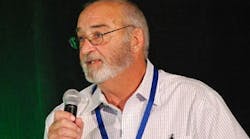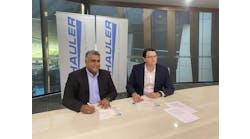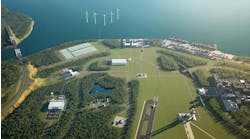“We wanted extensive redundancy to avoid spurious trips.” Brad Wentling’s control upgrade wish-list also prioritized small footprint and the ability to do online maintenance on the system.
When Brad Wentling was looking to modernize the controls on his employer’s trio of olefin compressor trains, three factors were top of mind. First, the project support analyst needed to replace turbine and compressor controls that were growing increasingly difficult to maintain and repair. “Obsolescence always is an issue,” Wentling said. “We don’t want to end up buying parts on eBay.”Second priority was higher system availability, to be enabled by redundancy of key control system components. “We wanted extensive redundancy to avoid spurious trips,” Wentling said. Redundancy would also allow system maintenance to be performed without shutting down production.
Third priority was that the new, more capable system be compact enough to readily fit within the obsolete system’s footprint.
Wentling ultimately selected Schneider Electric to supply new integrated turbine/compressor controls centered on the company’s Trident SIS Logic Solver platform, a new human-machine interface for monitoring of system performance, and a mechanical retrofit that included turbine valves and trip-and-throttle (T&T) valve replacements.
Wentling, together with Sarah Harper-Tarantolo, project application engineer, Schneider Electric, detailed the recent upgrade during a presentation at this week’s EcoStruxure Triconex User Group meeting in Galveston, Texas.
Space constrained
The legacy control system had been contained within a two-doored cabinet with controller and I/O modules in the front and I/O marshalling in the back. A similar cabinet layout was used for the new system, with existing cabling marshalled in the rear of a new purged cabinet for the Class I, Div 2 environment.
Meanwhile, in the front of the cabinet reside triplicated Trident main processors, redundant communications modules, sixteen I/O modules (with hot spare), redundant 28 VDC power distribution system, independent overspeed trip device, DCS/HMI network switch and daisy-chained HART communications interface.
“The entire system is now maintainable online,” said Harper-Tarantolo. “So hopefully never have to bypass again.”
The integrated control system for the compressor/turbine pairs handles startup/shutdown sequencing, machine protection functions, governor speed control, governor extraction control, compressor anti-surge control, compressor performance control, servo position control along with a range of auxiliary controls such as oil pump start/stop.
Other redundant Schneider technologies in play include TRAC (for Turbine Redundant Actuator Control), which supports triplicated servos working together to supply or drain oil of the power cylinder, as well as Trip Block Assemblies (Quadvoter), which supports two redundant paths (with two servos each) to dump trip oil in the event of a trip.
Results delivered
Like most control system modernization projects, this one was not without its challenges. And the fact that the plant’s main DCS and SIS were being modernized at the same time certainly didn’t help, said Wentling. Some late design changes and custom factory acceptance test (FAT) procedures posed bumps in the road, Harper-Tarantolo noted. And both organizations came away with a renewed appreciation for the importance of regular communications among the busy project teams.
In the end, the project delivered improved mechanical functionality and updated controls; enabled compliance with API 612 and API 670 requirements; optimized existing space constraints; enabled online maintenance and removed single points of vulnerability; boosted reliability, uptime, safety and ease of operation; and reduced spurious trips, maintenance costs, and long lead times for repair.
Since installed, there have been several system trips unrelated to the new controls and the system responded flawlessly, Harper-Tarantolo said.
“We’re very happy with the new system,” Wentling added. “We continue to tweak some test tolerances on the servos, but we’re in a good place.”
The editors of Control were on site at the 2018 Triconex User Group Conference to bring you breaking news, innovations and insights from the event. Now that the event is over, the editors have put together an event report featuring the top news. Get your copy today.





